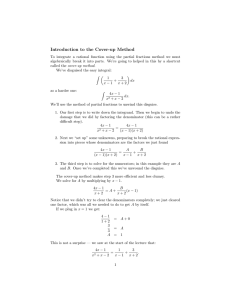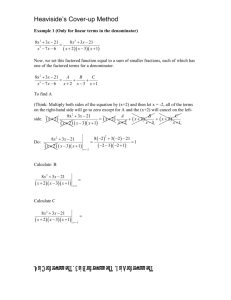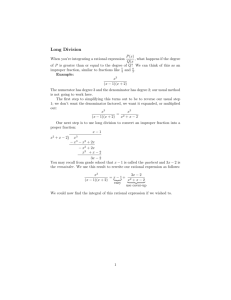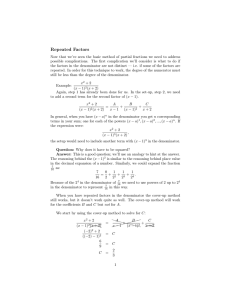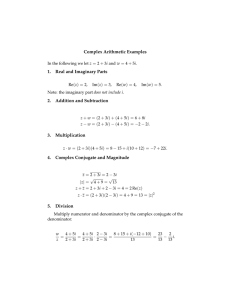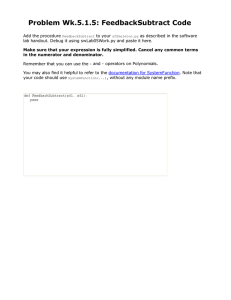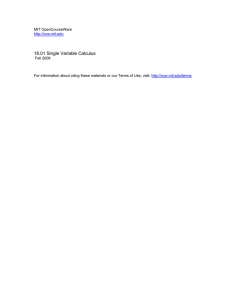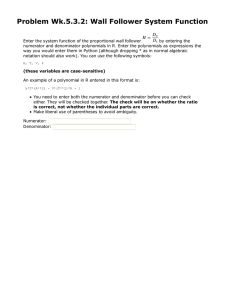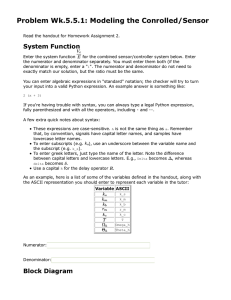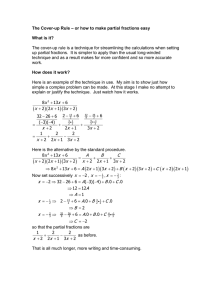The Cover-up Method
advertisement
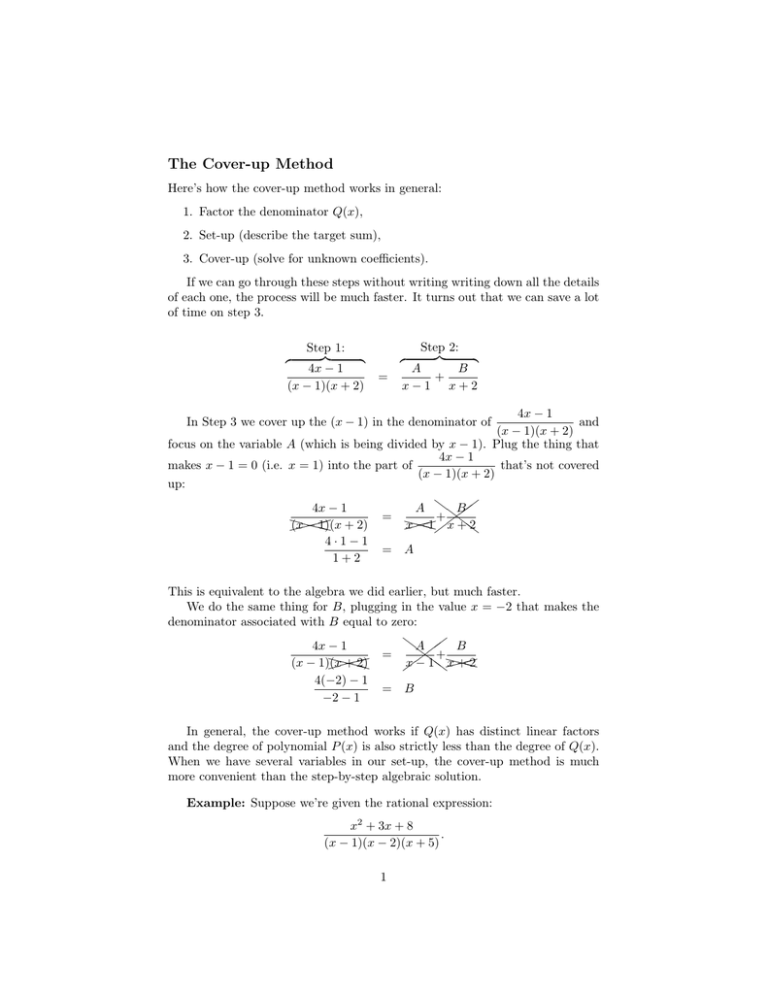
The Cover-up Method Here’s how the cover-up method works in general: 1. Factor the denominator Q(x), 2. Set-up (describe the target sum), 3. Cover-up (solve for unknown coefficients). If we can go through these steps without writing writing down all the details of each one, the process will be much faster. It turns out that we can save a lot of time on step 3. Step 1: �� � 4x − 1 (x − 1)(x + 2) Step 2: �� � B A + x−1 x+2 � � = 4x − 1 and (x − 1)(x + 2) focus on the variable A (which is being divided by x − 1). Plug the thing that 4x − 1 makes x − 1 = 0 (i.e. x = 1) into the part of that’s not covered (x − 1)(x + 2) up: In Step 3 we cover up the (x − 1) in the denominator of 4x − 1 � � (x� −� 1)(x + 2) � � � 4·1−1 1+2 = A � B�� +� �+ � � � �� x− 1�x 2 � � = A This is equivalent to the algebra we did earlier, but much faster. We do the same thing for B, plugging in the value x = −2 that makes the denominator associated with B equal to zero: 4x − 1 � (x − 1)� (x� +� 2) � � � 4(−2) − 1 −2 − 1 = �A �� B � +� � � x� −� 1�� x+ 2 � � = B In general, the cover-up method works if Q(x) has distinct linear factors and the degree of polynomial P (x) is also strictly less than the degree of Q(x). When we have several variables in our set-up, the cover-up method is much more convenient than the step-by-step algebraic solution. Example: Suppose we’re given the rational expression: x2 + 3x + 8 . (x − 1)(x − 2)(x + 5) 1 The denominator is already factored, so we can skip step 1. From step 2 we get: x2 + 3x + 8 A B C = + + (x − 1)(x − 2)(x + 5) x−1 x−2 x+5 When using this method, there will always be one term in the final sum for each linear factor in the denominator. Next we would find the value of each variable, A, B, and C, using the cover-up method. x2 + 3x + 8 � � � (x� −� 1)(x − 2)(x + 5) � � 12 + 3 · 1 + 8 (1 − 2)(1 + 5) A = � �B A � ��C� + �� + �� � � � � x −� 1 � x − 2 x +� 5 � = A = −2 2 MIT OpenCourseWare http://ocw.mit.edu 18.01SC Single Variable Calculus�� Fall 2010 �� For information about citing these materials or our Terms of Use, visit: http://ocw.mit.edu/terms.
